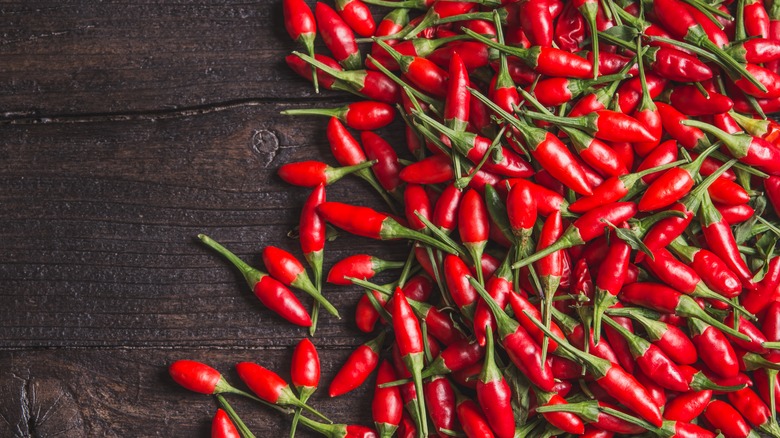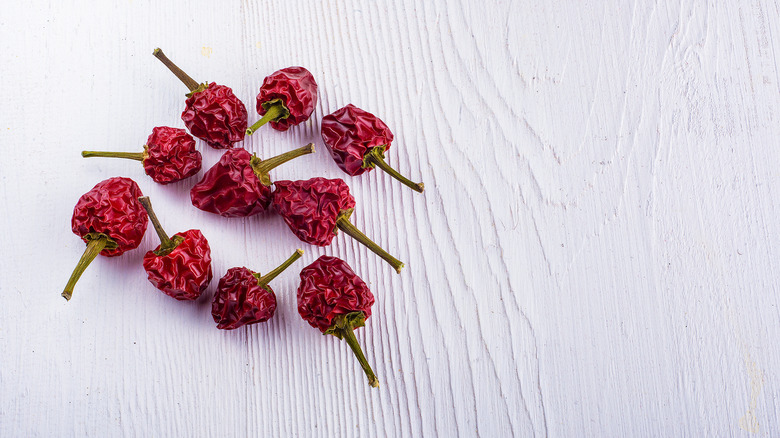How Calabrian Chiles Get Their Heat
The province of Calabria, which composes the tip of the Italian "boot," is relatively unknown to outsiders. Condé Nast Traveler remarks that tourists are so rare in the region that those who do venture there can have a hard time finding accommodations. Italians from other regions express little interest in Calabria, as the province's reputation has been largely defined by its troubled side. Per Britannica, the region's development has been hindered by geographic factors, including frequent earthquakes, mountainous terrain, and a lack of transportation links to the rest of Italy.
A powerful organized crime syndicate known as the "Ndrangheta" is based in Calabria, preying upon its people and unfairly coloring the region's national and international image. But Calabria's hostile reputation is slowly beginning to change, powered by its cuisine, which has a heavy emphasis on spicy items like nduja, a spreadable, chile-infused sausage that is a standard topping for ultra-thin crust Calabrian pizza.
Condé Nast Traveler notes that Calabrian menus often employ terms like "diavolo" (of the devil) and "infernal" (from hell) to describe dishes, and Vice makes note of the Peperoncino Festival, which draws around 200,000 people a year to the town of Diamante. "Peperoncino" is an Italian word used to describe any spicy pepper, per Merriam-Webster, but Calabrian chiles are a unique and particularly potent variety, something you can only find in this one-of-a-kind region.
Calabria has a unique climate
Calabrian chile peppers are small and plump, around the size of a cherry, according to Specialty Produce. Their diminutive nature belies their powerful spice, as these chiles score between 25,000 and 40,000 on the Scoville scale. For comparison, MasterClass reports that a jalepeño comes in around 10,000 Scoville units. That kind of heat can't be found anywhere else in Italy. In fact, Condé Nast Traveler notes that most northern Italians dislike spicy foods, keeping Calabrian cuisine a highly localized specialty.
But the limited reach of these chile peppers has everything to do with climate, as it turns out other regions of Italy couldn't reap such gloriously spicy peppers, even if they wanted to. Despite Calabria's rough terrain, Britannica reports that the province is a hub of agriculture, and its climate is particularly perfect for growing chiles. Specialty Produce notes that Calabria has extremely nutrient-rich clay soil.
When chile peppers were first introduced to Italy by the Spanish, they found a natural fit in Calabria. Italian food supplier Giadzy adds that Calabrian weather, characterized by 300 days a year of the scorching sun, is tailor-made for hot chiles. The one downside of this phenomenon is that it somewhat limits the availability of Calabrian chiles. Per Specialty Produce, they are not commercially produced on the global level, and are only available through small, regional farms, meaning you may have to look for specialty grocers or online vendors to get some for yourself.

